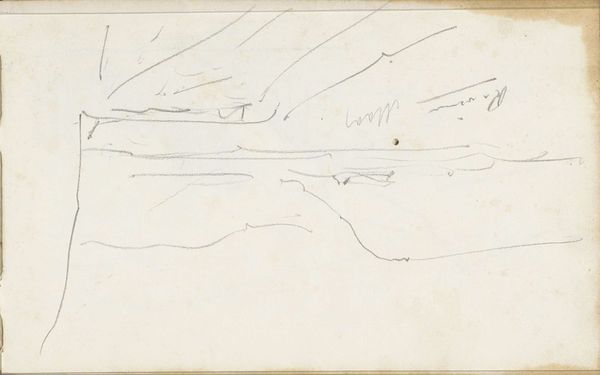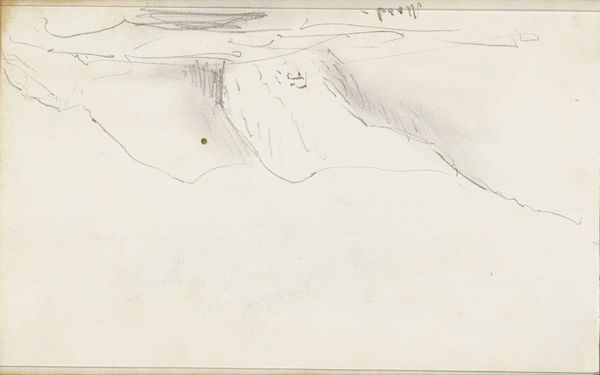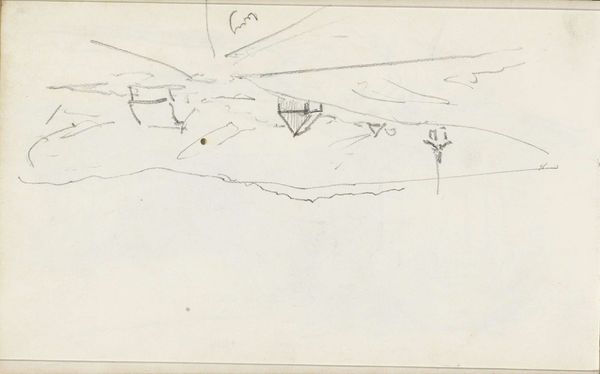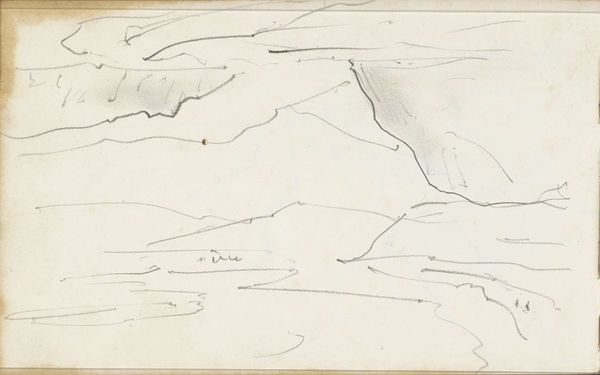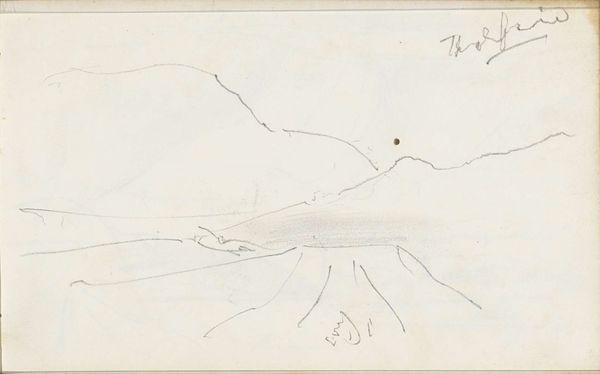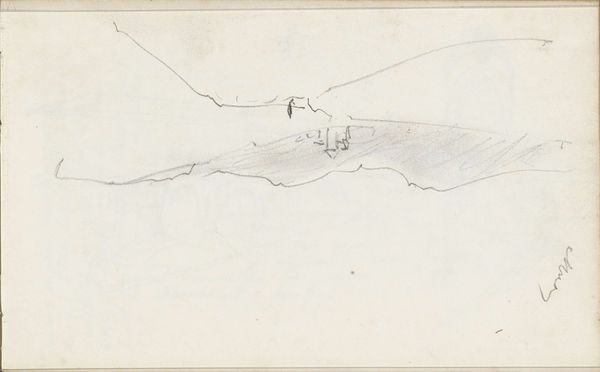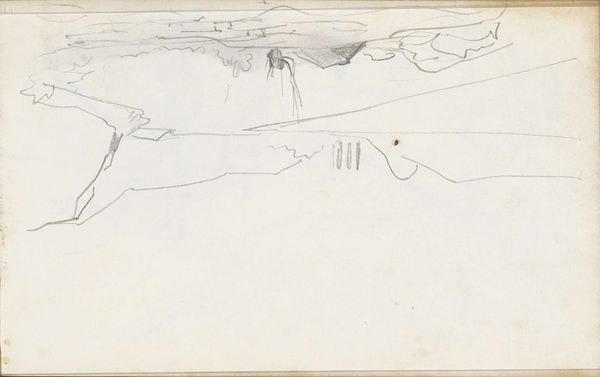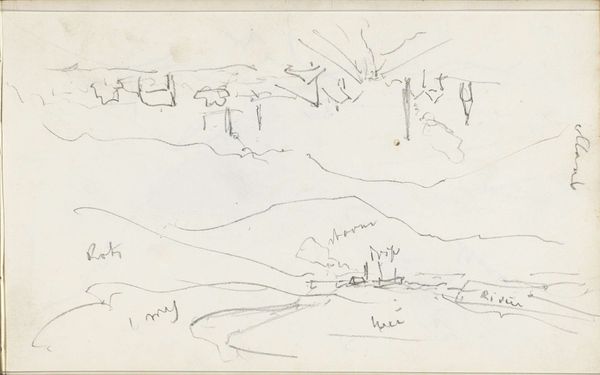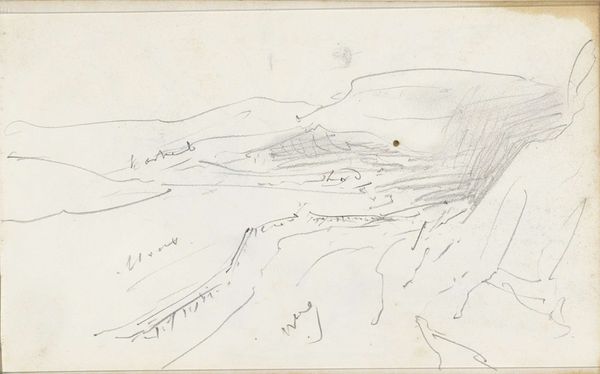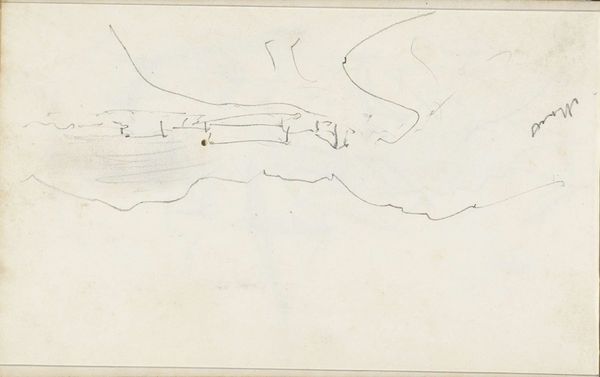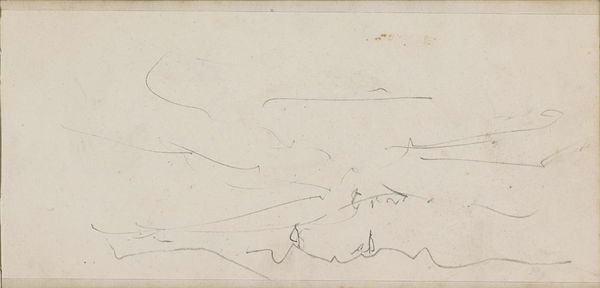
drawing, pencil
#
drawing
#
pencil sketch
#
landscape
#
river
#
romanticism
#
mountain
#
pencil
Copyright: Rijks Museum: Open Domain
Editor: This is Johannes Tavenraat's "Berglandschap met een weg langs de Maas," a pencil drawing from 1840-1841. It looks so light, almost like a fleeting memory. What do you see in this piece? Curator: I see an artist wrestling with the sublime, tapping into the cultural memory of Romanticism. Consider the delicate pencil strokes; they don't just depict mountains and a river, but the *idea* of nature. Do you see how the sketch almost disappears into the white of the paper? Editor: Yes, it's very faint. Almost like he’s hinting at something, rather than defining it. Curator: Precisely. This lightness evokes the transience of human experience against the backdrop of timeless nature. The Maas River itself carries centuries of stories – of trade, conflict, cultural exchange. Tavenraat isn't simply drawing a landscape; he's invoking a feeling, connecting to that historical weight. It also makes me think of a psychological landscape – what feelings do these mountains and rivers evoke in you? Editor: It feels a bit melancholic, but also peaceful. I guess the unfinished quality makes me focus on what is there, but also imagine what could be. Curator: That sense of potential is key! These sparse lines leave room for *your* interpretation, *your* memories. Think of the symbols – the mountain representing endurance, the river, the flow of time... he’s asking you to project your own narrative onto it. Editor: That's fascinating, I hadn’t thought of it that way. It's not just a picture, it's an invitation. Curator: Exactly. And seeing art this way helps us tap into our own histories, our own symbolic language. I’ll definitely be considering the historical impact on more understated pieces moving forward.
Comments
No comments
Be the first to comment and join the conversation on the ultimate creative platform.
